
Editor’s Note: This is a follow-up article regarding the improvements New York’s Olympic Regional Development Authority (ORDA) has made to its Mt. Van Hoevenberg property, specifically its lodge, and what has yet to be planned. The first article, “Lake Placid: Mount Van Hoevenberg at the Crossroads,” originally appeared in April 2012.
***
LAKE PLACID, N.Y. — A picture of garaged machinery shouldn’t get a skier excited. But this was different.
Attached to a text message – “It’s here!” – was a photo of a brand new Pisten Bully 100, delivered to Mt. Van Hoevenberg in Lake Placid, N.Y., in November 2012. That was one of several improvements that came to Van Ho, the home of the 1980 Winter Olympics.
Known as “Van Ho,” the 50-plus-kilometer nordic area and nearby sliding track is operated by the Olympic Regional Development Authority (ORDA). After the 1980 Olympics, New York state created ORDA to manage all of its Olympic venues, including Lake Placid’s Olympic Center and speed-skating oval, the jumping complex, Olympic Training Center, and the alpine-ski areas, Whiteface, Belleayre and Gore.
To get the Pisten Bully out, Van Ho maintenance crews rebuilt some bridges to support the weight of the new groomer.
In the summer of 2012, ORDA also remodeled its cross-country lodge. On one side, walls were removed to create more usable space. Paneled with blond wood, the new space relieves crowding on busy days. Last but not least, if you’re a master blaster with a toddler in tow – there’s a new baby changing station in the men’s room. Equal rights have made it to Van Ho.
This past spring, ORDA Communications Manager Jon Lundin outlined some of the criteria for the authority’s annual planning. One doesn’t just cut a six-figure check for a snow cat. According to Lundin, ORDA assesses its needs during the winter and makes final plans in the spring.
“Purchase of grooming equipment depends on availability of snow cat and timing of funding,” Lundin wrote in an email. “[It] could take 8-10 months or could be quicker depending on both variables.”
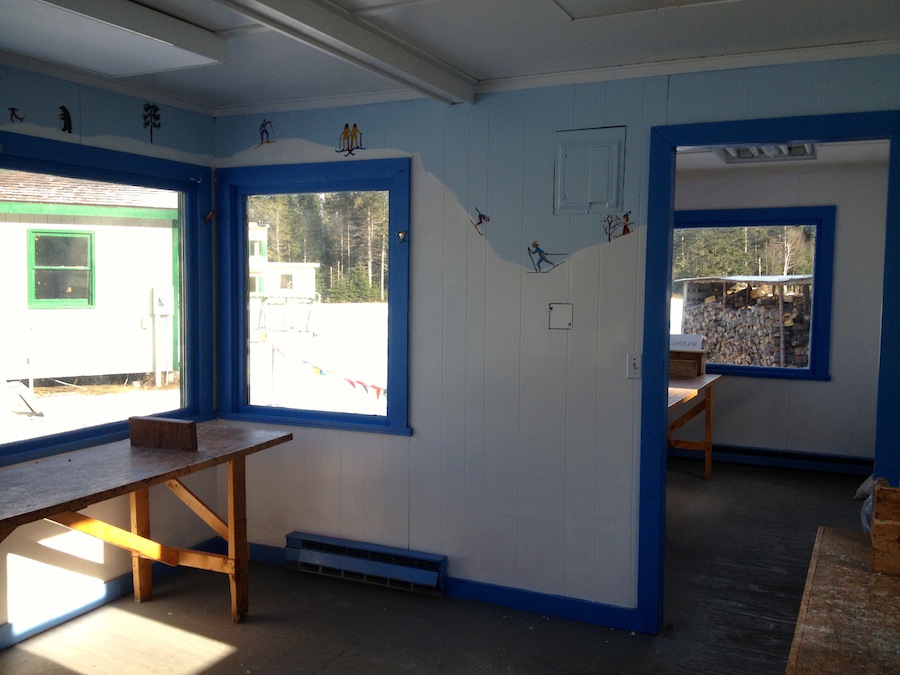
Larger capital improvements have a longer timeline. For example, “[Alpine] ski lifts have to do with preliminary engineering, market variables such as number of lifts being installed in North America (availability of materials based on that) and funding,” Lundin wrote. “Eighteen months is a good and fair barometer” of the time it takes to put in a ski lift.
This year, ORDA made additional improvements to its cross-country lodge, expanding the lounge area into the former wax rooms for more public seating. The wax rooms are now in the New York Ski Educational Foundation (NYSEF) changing building behind the lodge, and the NYSEF team moved into the timing building, ORDA’s Olympic Sports Complex program coordinator Rebecca Dayton explained.
“More room and better flow for them as they are now in the same building as their wax facilities and more room and better ventilation for other skiers,” she wrote in an email.
As of Dec. 21, a small bar area was also under construction with the intent “to serve wine, beer and light snacks during the season,” Dayton added. Outside the lodge, trail homologation is complete with FIS certificates for six separate loops ranging from 1.4 to 7.5 km in length, she explained.
Laundry List of Long-Term Projects
While these are welcome improvements, more could be in store. But navigating the waters can be tricky.
Located in the Adirondack Park, most of Van Ho’s land is owned by the Department of Environmental Conservation (DEC), and ORDA operates Van Ho under an agreement with the DEC. It remains subject to Article XIV of New York’s Constitution, which mandates that Adirondack Park land shall be “forest preserve… forever…wild.”
The Adirondack Park Agency (APA) oversees land use in the park. According to the APA, Van Ho is designated as an “intensive use” area. Their State Land Master Plan specifies that Van Ho should be maintained as a “year-round sports facility meeting international standards for such sports as … cross country skiing on improved cross country ski trails under developed, competitive conditions.”
Under APA’s guidelines, ORDA and the DEC prepare a Unit Management Plan (UMP) outlining how Van Ho will be developed. There are dozens of UMPs for various public land parcels in the Adirondack and Catskills parks.
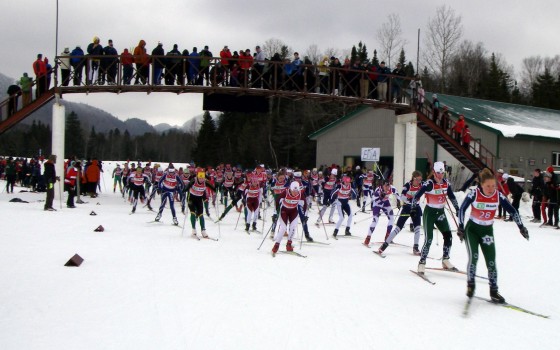
Approved in 1999, Van Ho’s plan calls for, among other things, refurbishing and repurposing the biathlon lodge as a ski-tourism lodge. It includes building a new cross-country lodge “in a location with better drainage” than the site of the current lodge.
In a previous FasterSkier article, Greg Stratford, then-assistant manager of the Olympic Sports Complex, discussed the concept of replacing both the existing lodges with a single building on the site of the current cross-country lodge.
“One of the problems is that if we build a new stadium, it would need to be suitable for both cross-country and biathlon,” he said in April 2012. “Each of the different sports that use our facilities has their own specifications and requests and wants and needs. We need to get everybody together to determine what would be the best scenario for Mt Van Hoevenberg.”
Asked where the biathlon range might be sited for a single lodge, Lundin wrote, “Nothing contemplated.”
When asked whether a combined lodge to serve both Van Ho’s cross-country and accompanying sliding track was under consideration, he replied, “That concept has not been part of our planning process.” Dayton confirmed that there are no plans to build a new lodge currently in the works.
Environmental and Financial Challenges
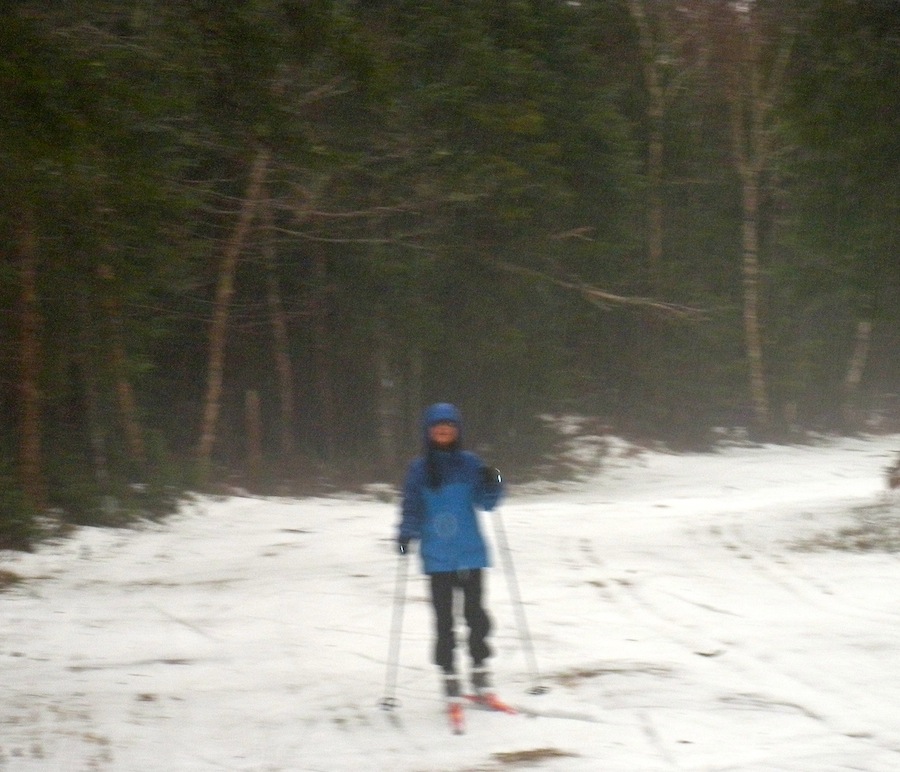
Whatever the future holds, if a new lodge was to be built at Van Ho, or snowmaking installed, it’s not as simple as drawing blueprints and soliciting bids from contractors.
Reviewing Article XIV case law, the UMP’s authors conclude that the improvements proposed for Van Ho “are consistent with the mandates of Article XIV.”
But a in a subsequent section, the UMP separates planned improvements into two categories: those that that don’t require an amendment to Article XIV and those that do.
Purchasing new grooming equipment, remodeling the biathlon lodge as a destination for recreation, and trail maintenance, for example, don’t require a constitutional amendment.
However, installing a new snowmaking system, building a new cross-country lodge “in a location with better drainage” than the current lodge, and rebuilding the tunnels under the access road – among other things – would require an amendment to Article XIV.
Would a new cross-country lodge, built on the site of the current one, require an Article XIV amendment? Dayton declined to comment. “That is outside my area of expertise,” she wrote.
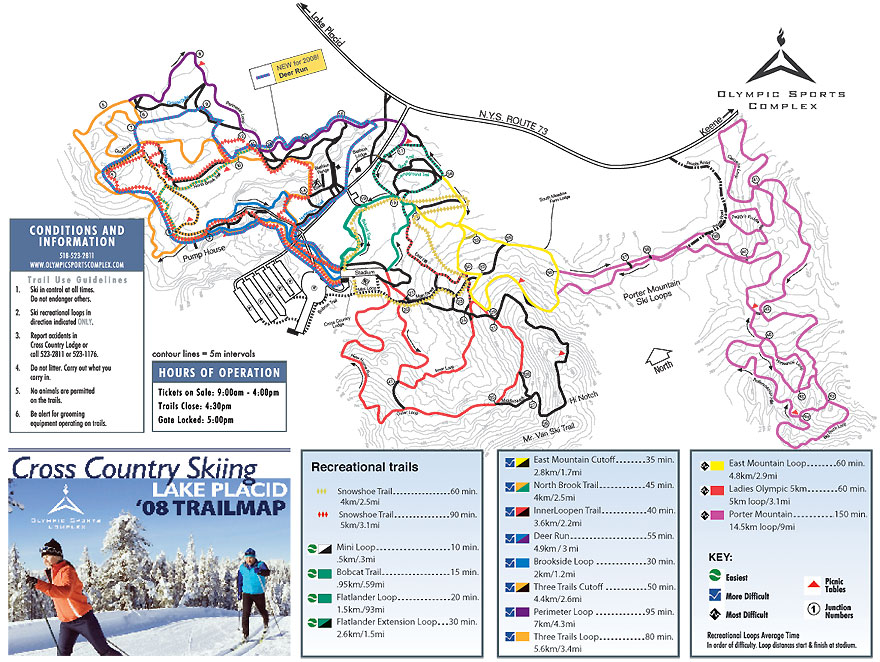
What is it exactly about these improvements that would require a constitutional amendment?
“The proposals in the Van Ho UMP are compliant with the State Land Master Plan for Intensive Use,” APA spokesman Keith McKeever explained in an email, while adding, “With regards to the constitutional questions raised, APA does not make those determinations. That would be done by the Attorney General’s Office.”
The New York State Attorney General’s office declined to comment.
According to DEC spokesman David Winchell, ORDA would need to discuss proposed improvements with the DEC, which would decide whether a constitutional amendment would be necessary. The DEC “would determine whether the proposed action is acceptable” and would collaborate with ORDA “to determine whether an amendment should be pursued.”
Asked why ORDA hadn’t pushed for an amendment to Article XIV for Van Ho, Lundin wrote, “We have not pursued it at this time.”
The LA Group of Saratoga Springs, N.Y., conducted much of the environmental impact analysis for the plan. When asked what environmental road blocks there might be to improvements at Van Ho, director of environmental planning Dean Long declined to comment. “Our last work at the facility was in 1996,” Long wrote.
Resolving a possible Article XIV issue is only one challenge. ORDA would also have to find a way to pay for major improvements such as a snowmaking system. In addition Mt. Van Hoevenberg, ORDA has to budget for improvements at its other venues. Besides the Pisten Bully and an excavator for Van Ho, in its last fiscal year, ORDA renovated part of a Whiteface ski lift and purchased new snow cats for Whiteface and Gore.
Everything You Were Afraid to Ask in Civics Class
“You have conversations. There’s dialogue before a bill is introduced,” according to a person closely involved with the New York State Legislature.
Declining to be identified, the source explained that either ORDA or the DEC might approach a legislator to sponsor an amendment to Article XIV. The bill would pass through committee before being introduced to the entire legislature.
Hypothetically, any bill to amend Article XIV would have to be passed by two separate sessions of the N.Y. legislature. The legislature is up for election every two years. If a bill passes that hurdle, it would then be presented to the electorate as a referendum If an amendment to Article XIV was brought before the legislature, it would take about five years to pass.
The approach to amending the constitution is anything but casual. The source stressed that the legislature is “judicious in how frequently this is done.” Once an amendment makes it to the ballot, they do everything possible to ensure its success. It’s “critical to have environmental organizations on board,” he concluded.
The Future for Van Ho
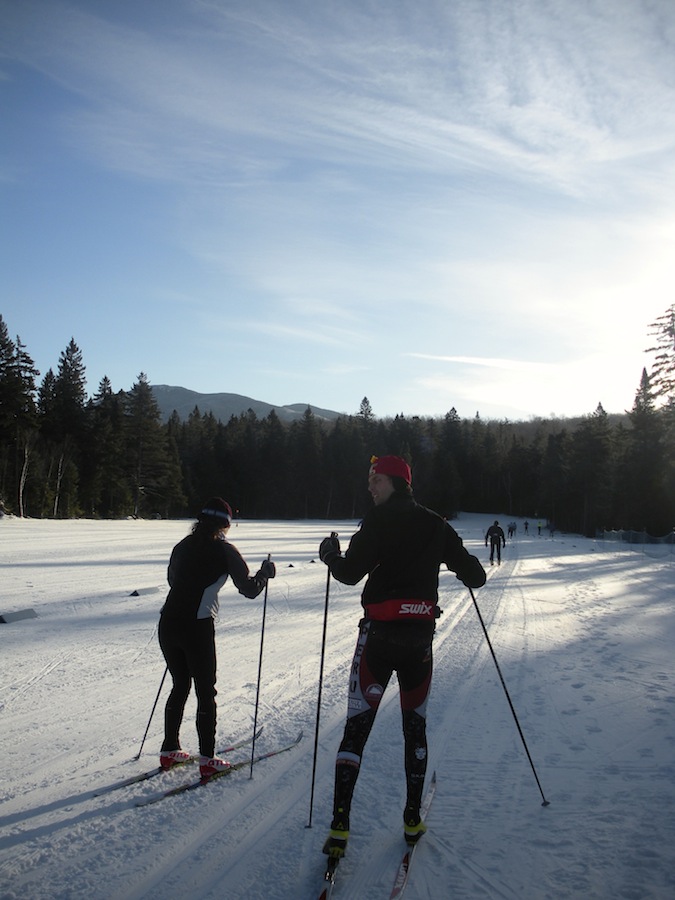
Completed in 1999, Van Ho’s UMP was “proposed to be accomplished in five phases over the next five years.” It acknowledged that development could take longer.
In 2000, Van Ho’s 1980-vintage luge and bobsled tracks were replaced with one spectacular state-of-the-art sliding track. New York kicked in $13.5 million of the $20-million dollar cost, with the federal government covering the balance. The new track didn’t require an Article XIV amendment. The sliding track was a major piece in Van Ho’s UMP.
The Whiteface Memorial Highway illustrates the challenges facing Van Ho. If you’ve raced the Climb to the Castle, you’ve experienced this road’s frost heaves, bumps and sections of cracked pavement that can break poles and upend skiers.
Like Van Ho, the highway is located on DEC-owned land and managed by ORDA. The highway signs are property of the New York Department of Transportation. None of these bodies has the budget for repaving the highway. For over 40 years, the road didn’t see a major repaving project and deteriorated over time. Only recently, New York Governor Andrew Cuomo announced that he would appropriate $12 million dollars to repave the highway and refurbish the summit castle and toll house.
Over the last two years, ORDA has made significant changes at Van Ho. But some of the biggest projects in the UMP require significant expenditure and effort. Determining whether a constitutional amendment is necessary is only one challenge. Financing the improvements is another.
Peter Minde
Peter Minde is a FasterSkier contributor and personal trainer specializing in functional strength and corrective exercise. Whether skiing, trail running, or cycling, he’s always looking to see what’s at the top of the next hill. From the wilds of north N.J., he skis for Peru Nordic. On Twitter @PeteMinde or at www.oxygenfedsport.com.

3 comments
T.Eastman
December 26, 2013 at 10:51 pm
Great write up Peter. It seems the continual major improvements at the bob/luge complex are not subject to the level of environmental review and constitutional scrutiny the that has stalled improvements at the XC area for some three decades. It is quite the two-step those agency spin masters perform when asked simple questions.
Thanks for keeping this matter in the XC community’s sights,
Todd Eastman
tony
December 28, 2013 at 3:08 pm
I agree that it’s a good write up summarizing where this facility stands and what the future might hold. As for the environmental issues mentioned, the first point I should make is that the bob/luge run area is not Forest Preserve but instead is land owned by the Town of North Elba and leased to the State of New York. This was the arrangement arrived at for the 1932 Olympics to allow the state to build and manage the run, but without the forever wild restrictions. The land was originally owned by the Lake Placid Club. The cross-country trails are all in an area classified as Intensive Use – the same classification as Whiteface, Gore and all of the state’s campgrounds. Therefore, lodges, snowmaking, and paved roads are all facilities that have precedents at other Intensive Use areas. I say “precedents” because the State Land Master Plan (SLMP), which defines “Intensive Use”, does not list permitted facilities. Regarding Mt. Van Hoevenberg, the SLMP merely says that, “The Mount Van Hoevenberg intensive use area should be maintained as a winter sports facility meeting international standards for bobsled, luge, biathlon, and improved cross country skiing under developed, competitive conditions.”
I thus do not think that any of the proposed improvements would require an amendment to Article 14. Not mentioned in the write up, but desired by Joe Lamb and others, would be a few loops considerably wider than the current trails so that they would be acceptable for World Cup Nordic Combined. Given that the current one jump format only separates the top starters by a minute or so, it’s practically a mass start where a wider trail is required. A trail 15 or so meters wide could possibly require a constitutional amendment, but perhaps it could be slipped in under the “meeting international standards” phrase in the SLMP.
Another interesting note on environmental issues is the saga of the paved biathlon training loop. Probably 20 years ago, there was a proposal, funded by a donor to the US Biathlon Association, to pave a training loop at the range. Environmentalists vigorously opposed this. ORDA, with the advice of the DEC, made an argument that the biathlon range and the route of the proposed paved loop were not on Forest Preserve because that land had originally been purchased in the 1960s by special bond act monies that supposedly said land acquired with these monies would not be Forest Preserve even though the lands were within the bounds of the Adirondack Park. (Yes, this gets awfully complicated.) However, by 1972 when the SLMP was first enacted there was a compromise. The new lands (most acquired for new campgrounds) would indeed be Forest Preserve, BUT there will be a classification for Intensive Use that will allow the sort of development required for a functioning campground. Since most of the campgrounds have paved roads, that should have been the argument. Now we do have a paved roller-ski loop and small range at the ski jumps, and this loop was much easier to cover with snowmaking than any of the terrain at Van Ho; so perhaps it worked out better in the end.
I should also mention that a new, combined lodge has been periodically considered since 1984, but no one site has ever apparently seemed just right, nor has there been the funds for its construction. A new Pisten-Bully will mean better skiing, so who needs to spend time in the lodge.
T.Eastman
December 28, 2013 at 4:24 pm
Tony, thanks for the clarification, and the careful framing. The ambiguities in the process still exist and a higher level of effort by ORDA would still seem to be important to keep Van Ho from drifting into obscurity as a functional race and recreation venue.